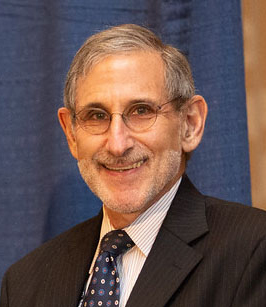Dr. Herbert Geller, researcher and AnCan Advisory Board Member, had some great thoughts to share about clinical trials titled “Seeing Clinical Trials From Both Sides” for our partner ZERO – The End of Prostate Cancer. We liked it so much, we wanted to share it with you again. Thank you so much Dr. Geller for being an important part of AnCan, and the patient community.
Like many men with prostate cancer, my introduction to clinical trials started with my primary care doc saying “Your PSA of 3.1 is higher than last year, so let’s get it checked out”.
Off to the urologist, who found that my prostate was enlarged and scheduled a biopsy. But before I underwent the biopsy, one of my colleagues at the National Institutes of Health (NIH), a prostate cancer survivor himself, suggested that I participate in a clinical trial at the National Cancer Institute whose goal was to test whether MRI may be used to diagnose prostate cancer.
As a scientist and researcher, the decision to participate was obvious – first, if the MRI was negative, I could be spared a biopsy, but if it wasn’t then I’d be in good hands. Unfortunately, it was the latter – both the MRI and biopsy found cancer that spread outside the prostate. And so began my journey as a prostate cancer patient and my involvement in clinical trials.
The NIH is our nation’s premier research organization, whose mission is to improve our health through discovery. Every patient here – including me – is always part of at least one clinical trial, if not more.
While my next scans seemed conventional – CAT scan, MRI, bone scans, DEXA scan – the next one, a PSMA-PET scan, was under another clinical trial to evaluate PSMA to detect metastases and compare it with conventional imaging. The FDA has now approved PSMA-PET for this purpose, but the FDA approval was based on data collected by a different clinical trial conducted at UCLA and UCSF. So those of us who participated in a PSMA-PET trial have contributed to a major advance in prostate cancer treatment.
After my diagnosis and treatment, I was then recruited to another clinical trial which required a biopsy of my bone metastases. Though this trial was more invasive and required anesthesia, and would not directly benefit me, I gladly volunteered. While there was some inconvenience, and I did lose about a half day’s work, I didn’t feel any pain and I returned to my lab.
While these trials were designed to improve the diagnosis and treatment of prostate cancer, I’m also part of a trial here to evaluate the psychological effects of a cancer diagnosis. Like the biopsy, this one is not going to benefit me, but hopefully will lead to new insights to help others through our ordeal.
At the moment, my condition is stable with current treatment, but if things change, then I’m prepared to move on to clinical trials that are testing new therapies. While the most novel trials are Phase 1, which are designed to test toxicity, I’d probably look at either late Phase 2 trials, which generally are testing novel therapies that were shown to have manageable toxicities in Phase 1, or Phase 3 trials, which are the final steps before approval. These trials can both help provide a cure as well as needed information to move the field forward.
Because I am both a medical researcher and a patient, I see clinical trials from both sides. They are essential to advance medical knowledge. Without careful observation and controlled studies, we’d be back to the age of snake oil. And, yes, as a patient, trials require a level of commitment above normal therapy, but that’s a small price to pay for medical progress.
For information on our peer-led video chat PROSTATE CANCER VIRTUAL SUPPORT GROUP, click here.
To SIGN UP for the Group or any other of our AnCan Virtual Support groups, visit our Contact Us page.

